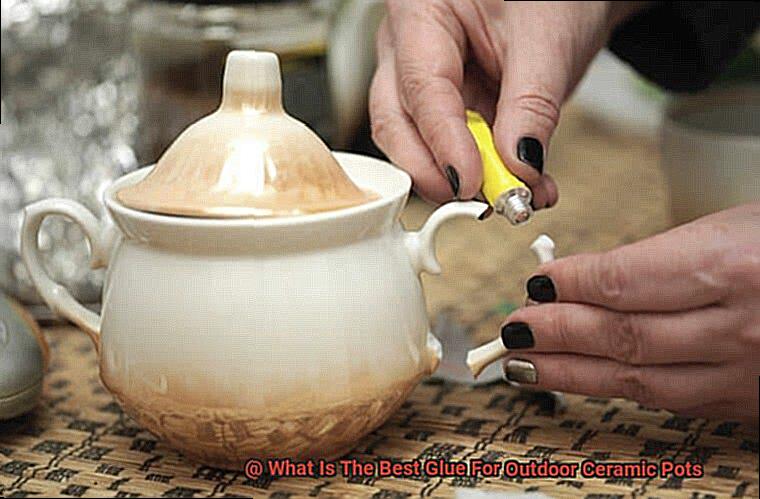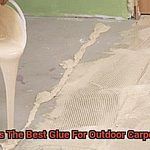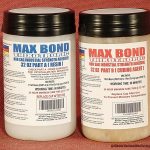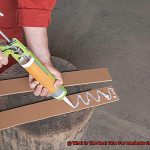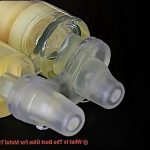Well, I’ve got the solution you’ve been searching for. Say goodbye to weak bonds and hello to sturdy creations.
In this blog post, we’re going to explore the absolute best glue for paper and cardboard. We’ll uncover a few types of glue that work wonders on these materials, each with their own pros and cons.
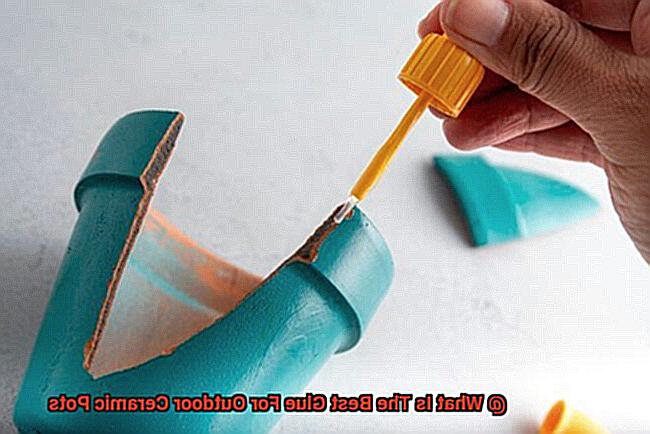
So let’s jump right in and uncover the secrets to achieving strong, long-lasting bonds with paper and cardboard.
What Factors Should Be Considered When Choosing the Best Glue for Paper and Cardboard?
Contents
When it comes to paper and cardboard crafts, selecting the right glue is crucial for a successful and long-lasting bond. With so many options available, it can be overwhelming to determine which glue is best suited for your project. In this blog post, we will explore the key factors to consider when choosing the perfect glue for your paper and cardboard creations.
Adhesion Strength:
The strength of the bond is essential, especially when working with lightweight materials like paper and cardboard. Look for a glue that offers a strong adhesion without compromising the integrity of the materials. It should provide a secure hold to prevent any peeling or detachment.
Drying Time:
Consider the drying time of the glue based on your project’s needs. Some glues dry quickly, while others allow for adjustment time. If you’re working on a complex or large-scale project, opt for a glue with a longer drying time to ensure you have enough time to position and align your materials properly.
Transparency:
If aesthetics matter in your project, choose a glue that dries clear or transparent. This way, you can avoid any visible residue or discoloration on your paper or cardboard, resulting in a clean and professional-looking finish.
Flexibility:
Paper and cardboard are prone to bending and folding, so it’s important to select a glue that remains flexible once dried. A flexible bond will allow your materials to move without cracking or breaking, ensuring the longevity of your project.
Non-Toxicity:
Safety should always be a priority, especially if you’re working with children or in enclosed spaces. Opt for non-toxic glues that are free from harmful fumes or chemicals. This way, you can enjoy your crafting experience without worrying about any health risks.
Application Method:
Consider the application method that best suits your project. Glues come in various forms like sticks, liquid, spray, or pens. Choose one that aligns with your needs and preferences. Liquid glues are versatile and easy to spread, while glue sticks eliminate messiness. Spray adhesives provide even coverage for large-scale projects.
Longevity:
If you want your paper and cardboard creations to stand the test of time, select a glue that offers long-term durability. Ensure that the adhesive properties won’t deteriorate over time, leading to the separation of your materials. Look for glues specifically designed for long-lasting bonds.
Ease of Use:
Last but not least, consider the ease of use when selecting a glue. Choose a glue that is easy to apply, spreads evenly, and cleans up effortlessly. This will make your crafting experience more enjoyable and efficient.
White Glue
When it comes to crafting with paper and cardboard, choosing the right glue is essential. Look no further than white glue, also known as school glue or PVA glue. This water-based adhesive is a popular choice for a multitude of reasons. Let’s dive into the properties and uses of white glue for your next arts and crafts adventure.
Versatility:
White glue is a true jack-of-all-trades when it comes to bonding paper and cardboard. Whether you’re working with lightweight paper, sturdy cardstock, or even corrugated cardboard, white glue will securely hold them together. Its versatility ensures that you can confidently embark on various projects without worrying about compatibility.
Ease of Use:
Crafting should be fun and stress-free, and white glue delivers on both counts. With its thick consistency, controlled application becomes a breeze. Say goodbye to excessive drips or messy mishaps. Whether you’re attaching small embellishments or delicate paper cutouts, white glue offers precise gluing with ease.
Non-Toxic Nature:
Safety always comes first, especially when crafting with children. Thankfully, white glue is non-toxic and generally safe for use under adult supervision. You can rest assured that your little ones can join in on the creative fun without any harm. However, it’s always wise to check the label for specific warnings or precautions.
Drying Time:
Patience is a virtue when it comes to white glue. It typically takes around 24 hours to fully dry and provide a strong bond. While this may require some waiting time, it ensures a durable connection between paper and cardboard. Consider the humidity and thickness of the applied layer when planning your project timeline.
Consider Alternatives:
While white glue is excellent for most paper and cardboard projects, there may be instances where alternative adhesives are more suitable. If you’re in a time crunch or require a more flexible bond, glue sticks or craft glues designed specifically for paper and cardboard may be worth exploring.
Glue Sticks
Crafting with paper and cardboard requires the right adhesive, and while white glue is often the go-to choice, glue sticks can be the perfect sidekick. Offering a mess-free and convenient alternative, glue sticks provide numerous advantages for all your creative endeavors. In this article, we will explore the advantages and disadvantages of using glue sticks for paper and cardboard projects.
Advantages of Glue Sticks:
When it comes to ease of use, glue sticks take the lead. No additional tools or equipment are required; simply twist up the stick and apply it directly to your desired surface. This simplicity makes glue sticks a great option for quick and hassle-free gluing.
Alongside its ease of use, glue sticks offer a quick drying time. They dry clear and fast, allowing you to swiftly move on to the next steps of your project without any delays. This advantage becomes especially valuable when working on time-sensitive projects or with young crafters who can’t wait for traditional white glue to dry.
Furthermore, glue sticks provide a mess-free application. Unlike liquid glues that can drip or spread beyond your intended area, glue sticks allow for precise control, preventing any unwanted messes.
Disadvantages of Glue Sticks:
While glue sticks excel in lightweight paper and cardboard projects, they may not be suitable for heavier materials or rough textures. In these cases, stronger adhesives like liquid glue or hot glue guns offer better bonding capabilities.
Additionally, it’s important to note that not all glue sticks are created equal. The strength of adhesion and drying time can vary between different brands and formulations. To find the best glue stick for your specific project, don’t forget to read product labels and reviews.
Tips for Using Glue Sticks:
To ensure proper bonding, it’s crucial to apply an even layer of adhesive. Thin lines or dots work better than large blobs, preventing wrinkling or warping of the materials.
Moreover, glue sticks can also be used with other materials like fabric, foam, and certain plastics. However, always ensure compatibility by checking the adhesive’s suitability for the specific material.
Proper storage is also important to prevent drying out. Keep your glue sticks capped tightly when not in use and store them in a cool, dry place to prolong their shelf life.
Craft Glues
Are you tired of watching your meticulously crafted paper and cardboard projects crumble into disappointment? Look no further. Craft glues are here to rescue your artistic endeavors. With their unwavering strength and versatile properties, these adhesives are the secret weapon every crafter needs. In this captivating passage, we will embark on a journey to explore the diverse world of craft glues, uncovering their unique applications and unleashing your creative potential.
Picture this: you’re knee-deep in a mesmerizing paper project, and suddenly, you’re faced with the challenge of keeping everything together. Enter white school glue, affectionately known as PVA glue. This water-based adhesive is an indispensable staple in every craft enthusiast’s toolkit. Its clear drying formula ensures an invisible bond, allowing your creations to shine. From delicate paper cutouts to sturdy cardboard constructions, white school glue has got you covered.
If mess is your mortal enemy, allow us to introduce you to the magic of glue sticks. These solid adhesive wands give you the power to apply glue directly onto your surface, eliminating any pesky spills or sticky fingers. Ideal for lightweight materials like paper, glue sticks offer convenience without sacrificing quality. However, when venturing into the realm of heavier cardboards, it’s essential to consider that their bond might not possess the same strength.
But what about those grandiose projects that demand Herculean strength? Fear not—super glue or cyanoacrylate adhesive is here to save the day. With its lightning-fast bonding prowess, super glue ensures that your cardboard models or three-dimensional sculptures remain impervious to the test of time. Proceed with caution though, as this mighty adhesive may not be suitable for all types of paper or cardboard.
Wait, there’s more. Step into the realm of specialty glues tailor-made for paper and cardboard crafts. These enchanted concoctions offer additional features such as acid-free formulas, shielding delicate papers from the clutches of yellowing, and ensuring their everlasting beauty. Fast-drying properties are another hidden gem within the world of specialty glues, bestowing upon you the power to speed up your crafting process and witness your visions come to life in record time.

When embarking on the quest to find the perfect craft glue for your paper and cardboard projects, it’s vital to consider the specific needs of your creation. Weight, flexibility, and longevity of the bond should be taken into account. To ensure the best results, don’t forget to embark on a small-scale testing adventure before fully committing to your grand masterpiece.
Epoxy Adhesives
Epoxy adhesives are the superheroes of the glue world, swooping in to save the day when your paper and cardboard projects are on the verge of falling apart. These incredible adhesives possess the power to create a bond so strong and durable that even the toughest challenges won’t tear it apart.
The key to epoxy adhesives’ super strength lies in their remarkable adhesion. They cling to paper and cardboard with a tenacity that rivals a superhero’s grip, ensuring that your creations stay intact no matter what. Whether you’re crafting a delicate greeting card or constructing a sturdy cardboard sculpture, epoxy adhesives guarantee that everything will remain securely in place.
But that’s not all – epoxy adhesives possess other superpowers as well. They boast resistance to chemicals and solvents, meaning your projects won’t disintegrate when exposed to water or oils. This is particularly crucial for items made from paper or cardboard that may come into contact with liquids.
Versatility is yet another attribute of epoxy adhesives. They come in various forms, including liquids, pastes, and gels, allowing you to choose the perfect consistency for your specific project. Applying them is a breeze – simply grab a brush or applicator and get to work. No mess, no fuss, just a formidable bond waiting to be formed.
However, like any superhero, epoxy adhesives do have their limitations. They may not be suitable for delicate or lightweight paper materials that can easily tear. To ensure success, it’s advisable to test the adhesive on a small area before committing to a full application.
Cyanoacrylate or Super Glue
In the world of adhesives, one glue reigns supreme when it comes to bonding paper and cardboard – cyanoacrylate, better known as super glue. This adhesive superhero possesses lightning-fast drying and formidable bonding capabilities that have made it a go-to choice for crafters and DIY enthusiasts alike. However, like any superhero, super glue has its strengths and weaknesses. In this article, we will delve into the pros and cons of using cyanoacrylate for your paper and cardboard projects, providing you with the knowledge to make an informed decision.
Advantage 1: Lightning-Fast Bonding
With cyanoacrylate glue, time is of the essence. Within a matter of seconds, this powerful adhesive forms a strong and secure bond. Whether you’re working on a last-minute project or simply appreciate immediate results, super glue’s quick-drying nature won’t leave you waiting around.
Advantage 2: Effortless Application
When it comes to applying cyanoacrylate glue, less is more. A tiny droplet of this adhesive goes a long way. Its easy application ensures that you can swiftly and precisely bond your paper and cardboard materials without creating a mess. Just remember to use it sparingly to avoid potential damage.
Disadvantage 1: Surface Compatibility
While cyanoacrylate glue excels at bonding paper and cardboard, not all surfaces are its best friends. Porous or rough materials may not provide ideal results with this adhesive. Before diving into your project, consider whether your chosen surfaces align with cyanoacrylate’s requirements for optimal bonding.
Disadvantage 2: Brittle Bonds
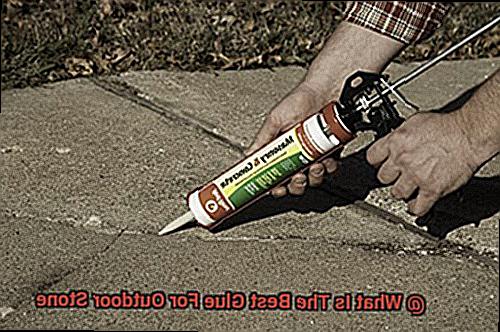
Cyanoacrylate glue may create an initially strong bond, but over time it can become brittle. Excessive stress or flexing can weaken or even break the bond. If your project requires flexibility or long-term durability, it’s important to take this potential brittleness into consideration.
Specialized Glues
When it comes to the world of arts and crafts, having the right adhesive is essential. While regular glues might suffice for some projects, specialized glues are the true superheroes when it comes to working with paper and cardboard. These specialized glues offer superior bonding strength and durability, ensuring that your creations stand the test of time.
One popular choice for paper and cardboard is PVA glue, also known as white glue or school glue. This water-based adhesive is non-toxic and easy to work with. It dries clear and flexible, making it perfect for bonding paper and cardboard together. Whether you’re working on an intricate art project or need to repair a torn book cover, PVA glue is a reliable option.
For those who prefer a mess-free application, glue sticks are an excellent choice. These solid adhesives can be applied directly onto the surface without any drips or spills. Glue sticks are especially useful for lightweight paper materials like scrapbooking or card-making. With their convenient twist-up design, they are a favorite among both children and adults.
When it comes to heavier applications or thicker cardboard, epoxy glue is the go-to adhesive. Epoxy glues consist of two components that need to be mixed together before application. Once mixed, they create a bond that is resistant to moisture and temperature changes. This makes epoxy glues perfect for bonding sturdy cardboard boxes or other structural applications.
If you’re working on a large-scale project or need an even distribution of adhesive over the surface, spray adhesives are your best bet. These specialized adhesives come in aerosol cans and provide a quick and easy way to apply adhesive to paper and cardboard. They are often used in industries that require delicate materials or where direct contact with the adhesive might cause damage.
It’s important to remember that not all glues labeled for paper and cardboard will provide the same level of performance. Always read the product labels and choose glues that specifically mention paper and cardboard as suitable materials for bonding. And don’t forget to test the glue on a small area before committing to the entire project to avoid any potential damage or discoloration.
bcDkP1kgw9c” >
Conclusion
In conclusion, selecting the perfect glue for paper and cardboard demands careful consideration of various factors. The strength of adhesion is paramount to prevent any unsightly peeling or detachment. Depending on the complexity or scale of your project, drying time should be taken into account, favoring longer drying times for intricate or large-scale endeavors. Aesthetics matter too, with a clear or transparent glue ensuring a polished and professional finish. Flexibility is key to avoiding any unfortunate cracking or breaking when working with materials that require bending or folding. And let’s not forget about non-toxicity – a crucial priority, especially when engaging in crafting activities with children or in confined spaces.
When it comes to versatility, ease of use, and non-toxicity, white glue (also known as school glue or PVA glue) takes the spotlight as a popular choice for paper and cardboard crafts. For those seeking convenience and mess-free application, glue sticks are an attractive option; however, they may not hold up well with heavier materials. Craft glues specially formulated for paper and cardboard offer additional benefits such as acid-free formulas and rapid drying properties.
If your project demands superior strength and durability, epoxy adhesives are your go-to solution – renowned for their ability to create long-lasting bonds. On the other hand, cyanoacrylate or super glue provides swift bonding but may not be suitable for all surfaces and can become brittle over time.
Ultimately, the best glue for you hinges on the specific requirements of your project.

